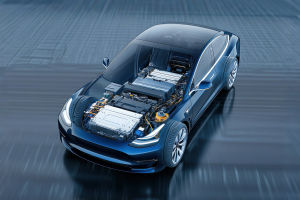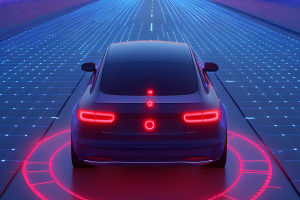For over a century, cars have been powered by gasoline and diesel engines. These Internal Combustion Engines (ICE) have dominated the automotive industry, with fuel stations scattered across the globe to meet the insatiable demand.
But as the world turns its attention to cleaner energy sources, we are witnessing a major shift: the transition from traditional fuel to hydrogen fuel cells.
This shift promises not only to revolutionize how we drive but also to significantly reduce the environmental impact of our vehicles. So, how exactly are hydrogen fuel cells changing the automotive landscape, and what does this mean for us, the consumers?
The Basics of Hydrogen Fuel Cells
Before diving into the advantages of hydrogen fuel cells, it's essential to understand how they work. Unlike traditional gasoline engines, which burn fuel to produce power, hydrogen fuel cells generate electricity through a chemical reaction. In a fuel cell, hydrogen is combined with oxygen from the air, producing water, electricity, and heat. The electricity powers the vehicle's electric motor, and the only byproduct is water vapor, making this technology extremely environmentally friendly.
Hydrogen fuel cells are particularly appealing because they combine the best of both worlds: the long range and fast refueling times of traditional vehicles, with the clean, zero-emission benefits of electric vehicles. This makes them an exciting alternative to battery-electric vehicles (BEVs), which still face challenges like long charging times and limited range.
Hydrogen vs. Gasoline: The Environmental Impact
We're all aware of the environmental toll of gasoline-powered vehicles. Carbon dioxide (CO2) emissions from burning fossil fuels are a major contributor to climate change, and pollutants like nitrogen oxides and particulate matter can harm our health and the environment. Hydrogen fuel cells offer a much cleaner alternative. When hydrogen reacts with oxygen in the fuel cell, the only waste produced is water vapor, which poses no threat to the environment.
In comparison, even with the increasing availability of electric vehicles, BEVs still depend on electricity that's often generated by fossil fuels, meaning they're not entirely emission-free. Hydrogen fuel cells, on the other hand, have the potential to be completely zero-emission, especially if the hydrogen is produced using renewable energy sources like wind or solar power.
The Advantages of Hydrogen Fuel Cells for Consumers
For us as drivers, the move towards hydrogen fuel cells could be a game-changer in terms of convenience. One of the biggest advantages of hydrogen vehicles is their refueling time. While charging a battery-electric car can take hours, hydrogen vehicles can be refueled in just a few minutes, similar to how we refuel gasoline cars today. This makes hydrogen-powered vehicles more convenient for long trips or for those who don't have access to fast charging infrastructure.
Moreover, hydrogen fuel cells also offer a longer driving range than many electric vehicles. A typical hydrogen vehicle can travel up to 300 miles on a single tank, with some models even pushing 400 miles. This is a significant advantage over most battery-electric cars, which are still struggling to achieve comparable ranges at an affordable price point.
The Challenges of Hydrogen Adoption
Despite its many benefits, hydrogen fuel cell technology is not without its challenges. One of the biggest hurdles is the infrastructure needed to support it. Unlike electric cars, which can be charged at home using a standard electrical outlet, hydrogen vehicles require specialized refueling stations. Currently, there are only a limited number of hydrogen refueling stations, primarily located in specific regions, making it difficult for drivers to rely on hydrogen vehicles for long-distance travel in many parts of the world.
Another challenge is the production of hydrogen itself. While hydrogen is the most abundant element in the universe, it doesn't exist in its pure form on Earth. To produce hydrogen for fuel cells, it must be extracted from other compounds, usually water or natural gas. However, the process of producing hydrogen can be energy-intensive, and if fossil fuels are used in its production, the environmental benefits are reduced. To fully capitalize on hydrogen fuel cells as a clean energy solution, we need to focus on green hydrogen, produced using renewable energy sources.
Hydrogen Fuel Cells and the Future of the Automotive Industry
So, what does the future look like for hydrogen-powered vehicles? Well, experts believe that hydrogen fuel cells could play a crucial role in decarbonizing transportation, particularly in areas where electric vehicles might not be the best option. For example, hydrogen fuel cells are well-suited for heavy-duty trucks, buses, and even trains, where long driving ranges and fast refueling times are critical.
Major automakers have already introduced hydrogen-powered models, and they continue to invest heavily in fuel cell technology. In addition, governments around the world are beginning to recognize the potential of hydrogen and are offering incentives for hydrogen production and infrastructure development. With increased investment in research and development, we can expect to see more hydrogen-powered vehicles on the roads in the coming years.
The Road Ahead: A Hydrogen-Fueled Future?
While hydrogen fuel cells aren't without their challenges, the potential benefits are enormous. As battery-electric vehicles continue to dominate the market, hydrogen fuel cells could complement them by offering a solution for specific applications where BEVs may fall short. The future of transportation could very well be a combination of both, with hydrogen fuel cells powering large vehicles and electric batteries taking care of everyday passenger cars.
For us, the shift from gasoline-powered vehicles to hydrogen fuel cells may take some time, but it's an exciting step toward a cleaner, more sustainable future. Hydrogen has the potential to reshape the automotive industry, and it's definitely worth keeping an eye on.


